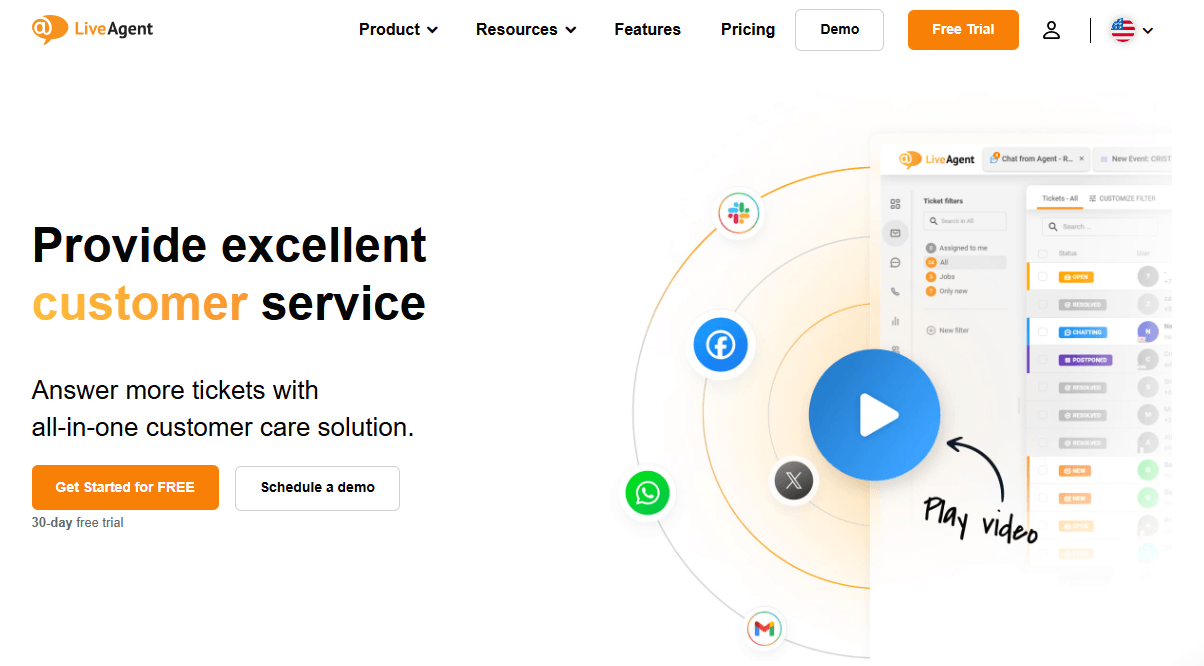Revolutionize Customer Service: Strategies That Deliver Results
Revolutionize Customer Service: Strategies That Deliver Results
Customer service is no longer just a department; it’s the heartbeat of businesses that want to thrive in today’s competitive digital landscape. With expectations higher than ever, customers demand not only quick solutions but also meaningful, personalized interactions. If businesses fail to deliver, customers won’t hesitate to look elsewhere—often to competitors.
No matter the size of your organization, optimizing your customer service strategy is critical. But where do you start? In this guide, we’ll dive deep into the actionable steps, tools, and best practices to transform your customer service strategy and keep your customers returning for more.
Why Customer Service is Your Secret Weapon
Think about the last time you had a frustrating experience with a company. Maybe your question went unanswered, you were passed around from one team to another, or you had to repeat your issue multiple times. Now think about how that experience made you feel.
Studies show that 89% of customers are more likely to repurchase after a positive experience, while poorly handled service interactions can lead to lasting damage to your reputation. Customer service is no longer just about answering inquiries; it’s a vital component of building trust, retaining customers, and driving long-term business growth.
Some key reasons why businesses should prioritize customer service include:
Retention is cheaper than acquisition: Acquiring a new customer can cost 5-25 times more than retaining an existing one. Excellent customer service encourages loyalty.
Customer experience influences brand perception: Positive service experiences turn customers into brand ambassadors who promote you to others.
It impacts your bottom line: Companies with excellent customer service have been shown to generate up to 5.7 times higher revenue growth compared to competitors.
Strategic customer service isn’t optional; it’s your competitive edge.
Build the Foundation: What Great Customer Service Looks Like in 2025
To build a strong customer service strategy, it’s important to understand what defines exceptional service in today’s climate. Customer expectations have evolved drastically, and businesses need to step up to meet them. Here are the hallmarks of top-tier customer service in 2025:
1. Speedy Responses Without Sacrificing Quality
Today’s customers expect near-instant help. Whether it’s through live chat, email, or social media, the ability to respond quickly is essential. However, speed shouldn’t come at the expense of thoughtful, accurate answers.
💡 Tip: Use tools like LiveAgent’s omnichannel system that integrates live chat, ticketing, and social media for faster response times.
2. Omnichannel Availability
Customers want to connect with you on their terms, whether it’s through email, social media, chat, or voice calls. Failing to offer support on the customer’s preferred channel can lead to frustration.
💡 Tip: Evaluate your key communication channels and make sure they’re unified under one system. Omnichannel tools like LiveAgent allow you to integrate communications seamlessly.
3. Personalization
Gone are the days of one-size-fits-all service. Customers expect personalized support where the agent takes into account their preferences, purchase history, and past interactions.
💡 Tip: Use customer relationship management (CRM) tools to track and analyze data, equipping your agents to deliver tailored solutions.
4. Proactive Engagement
Instead of waiting for customers to reach out, proactive customer service anticipates their needs. This might mean following up on past queries, sending out how-to guides, or offering personal recommendations.
💡 Tip: Automate proactive messaging to customers using customer journey tools or AI assistants. For example, LiveAgent’s AI chatbot can offer insightful solutions before customers even request help.
Best Practices for a Customer Service Strategy That Delivers Results
Transforming your customer service isn’t about reinventing the wheel. It’s about consistently delivering excellence. The following best practices can help you establish a foolproof service game plan:
1. Empower and Educate Your Team
Your customer service team is your first line of defense. Equip them with proper training, tools, and authority to address customer concerns effectively.
Hold regular training sessions to update agents on communication skills, product knowledge, and industry trends.
Create a knowledge base for fast reference. Tools like LiveAgent allow agents to access company FAQs, troubleshooting guides, and solutions instantly.
2. Incorporate a Ticketing System
An organized ticketing system allows you to manage large volumes of inquiries with ease. Whether customers reach out via email, chat, or social media, consolidating these interactions into one system ensures nothing slips through the cracks.
💡 Example: LiveAgent’s ticketing system can reduce response time by up to 95%, as it centralizes all communication for efficient handling.
3. Leverage Artificial Intelligence and Automation
Using AI doesn’t mean replacing your human agents; it enhances their capabilities by automating repetitive tasks. AI chatbots, for example, can answer simple customer inquiries, filter issues, or guide users to appropriate resources before transferring them to a live agent.
💡 Tip: Utilize LiveAgent’s AI chatbot to handle basic FAQs, product details, or order tracking inquiries. This lightens the agent’s workload, leaving them free to focus on complex issues.
4. Gather Customer Feedback—And Act on It
Never underestimate the value of customer feedback. It’s a goldmine for uncovering pain points and trends that may affect the overall experience. Create regular surveys, review social listening tools, and ensure customers know their opinions are valued.
💡 Actionable Idea: After resolving queries, send follow-up surveys through email, live chat, or social media interactions to gauge satisfaction and identify areas of improvement.
5. Provide Self-Service Options
Sometimes, customers don’t want to contact support; they want answers, fast. 90% of customers prefer accessing a self-service knowledge base before reaching out to a company. Invest in empowering them with educational content.
💡 Tip: Use LiveAgent to create a robust knowledge base with step-by-step guides, FAQs, and how-tos. Make sure this knowledge base is searchable and easy to navigate.
Tools to Supercharge Your Customer Service Strategy
Having the right tools makes all the difference between mediocre service and truly outstanding experiences. Here’s a list of must-have tools for modern customer service:
1. LiveAgent
LiveAgent stands out as an all-in-one customer service solution. Its key features include:
Omnichannel support that consolidates emails, chats, social media, and calls.
A powerful ticketing system to manage inquiries from multiple channels.
AI chatbot technology for automating basic interactions.
2. CRM Tools
Leading CRM platforms like Salesforce or HubSpot help track customer data, enabling better personalization and service.
3. Social Media Support Tools
Social platforms like Facebook, Instagram, and Twitter are vital for real-time engagement. Use tools like Hootsuite to manage inquiries across accounts efficiently.
4. Analytics Tools
Platforms like Google Analytics and Hotjar provide insights into customer behaviors, enabling you to identify service gaps and improve workflows.
Metrics That Matter: How to Measure Customer Service Success
An essential part of improving customer service is being able to track performance. Here are some critical metrics to monitor:
First Response Time (FRT): Measures how quickly customers hear back after reaching out.
Customer Satisfaction Score (CSAT): Gauges overall satisfaction with your service performance.
Net Promoter Score (NPS): Tracks how likely customers are to recommend your business.
First Contact Resolution (FCR): Assesses how often a customer’s concern is addressed on the first interaction.
Customer Retention Rate: Monitoring ongoing loyalty over time.
The Role of Company-Wide Culture in Delivering Exceptional Service
True transformation comes when excellent customer service becomes part of your culture. It's not just a task for the support team, it’s an organization-wide commitment. Here’s how to develop a customer-centric culture:
1. Lead by Example
Executive teams should embody the importance of exceptional customer service by openly prioritizing it. When leadership walks the talk, employees across departments are more likely to follow.
2. Celebrate Wins
Recognize and reward employees who go above and beyond for customers. This not only boosts morale but reinforces customer-first principles.
3. Integrate Feedback Across Departments
Share customer insights and feedback with all teams, from product development to marketing. This encourages company-wide support for improving the customer journey.
Looking Ahead: The Future of Customer Service
Customer expectations will only continue to rise as technology advances. Some trends already shaping the future of customer service include:
AI-Powered Personalization: Tailored solutions that leverage real-time data to predict customer needs.
Voice-Based Support: The growth of smart assistants like Alexa and Siri may influence customer expectations for voice-interactive solutions.
Hyperconvenient Self-Service: Enhanced, on-demand customer education using interactive videos, chatbots, and augmented reality guides.
Final Thoughts
Exceptional customer service is no longer just a "nice-to-have"; it's a necessity. Businesses that invest the time and energy into optimizing their service strategy will not only retain customers but also build lifelong loyalty, opening the door to long-term growth.
Ready to start transforming your service strategy? Consider tools like LiveAgent to amplify efficiency, build stronger connections, and streamline the entire process. Remember: customer satisfaction isn’t just about solving problems, it’s about creating positive, memorable experiences at every touchpoint.
Make 2025 the year your business becomes known for outstanding customer service. The time to act is now!
Created with © Ako Digital




